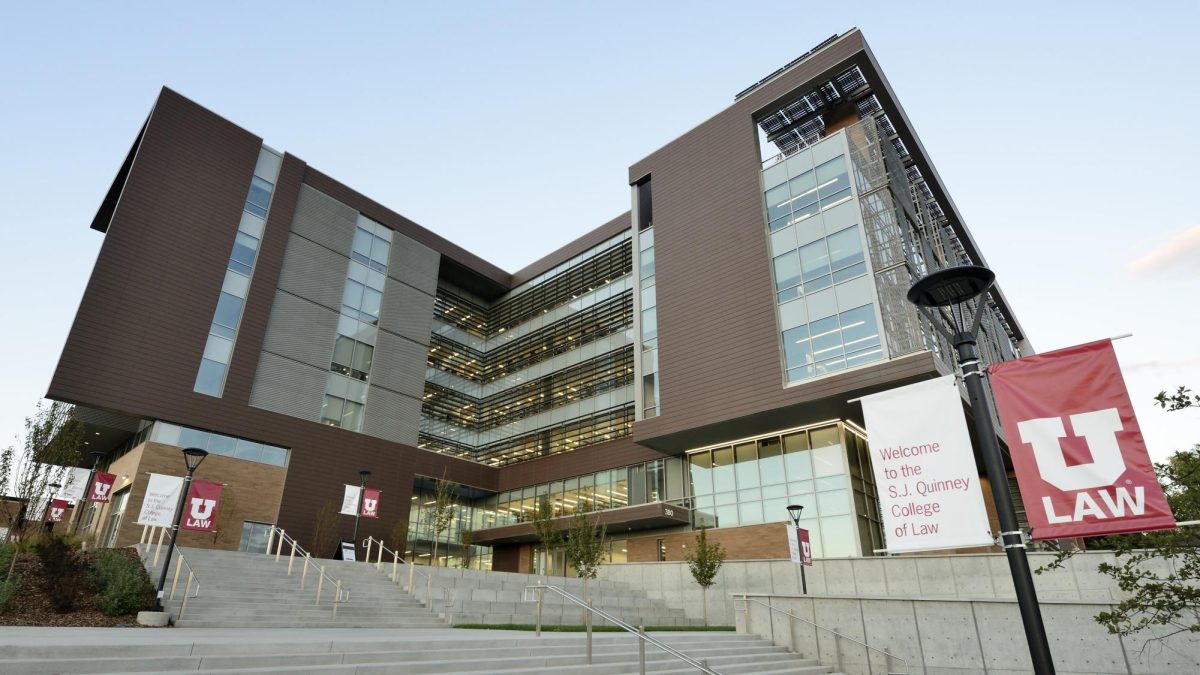Students engaged in three-hour backroom crisis simulations at the S.J. Quinney Law School‘s two-day counterterrorism simulation last Thursday and Friday as part of the law school’s Global Perspectives on Counterterrorism course. After each simulation, students were questioned by an expert panel of political and legal scholars.
Per the University of Utah’s press release on the event, “Students participating in the simulation are tasked with applying domestic and international law as they attempt to mitigate loss of life and the geopolitical consequences of domestic and international terrorist attacks. They must address complex dilemmas as they decide on appropriate responses by U.S. military forces and political leadership.”
Simulating Crises
The simulation posed several hypothetical scenarios. These included a white nationalist terrorist attack in Poughkeepsie, a potentially-hijacked plane, the kidnapping of a senator and a drone strike target in Syria. Students received dossiers prior to the session followed by live crisis updates in the form of videos, emails and tweets. They were then tasked to make quick choices on how to deal with emerging situations with unreliable information and present their decisions before a live video feed.
The back room of the law simulations resembled that of campaign office. Students clustered around nearly a dozen monitors, periodically noting developments on a wall of white boards. They grappled with conflicting U.S. security needs, the restraints of international law and diplomatic policy.
During one afternoon panel Friday, five students, each representing different roles like an international diplomat, federal law enforcement and specialized legal support, gathered in the law school’s moot courtroom to explain their choices. They spoke before an expert panel of six lawyers representing U.S. Congress.
The task force defended missteps, including a misattribution of terrorism to radical Islam and the use of “enhanced interrogation” tactics on a Canadian national. Students were also pushed to apply concepts of imminent threat, censorship and incitement to the limits of freedom of speech.
Twenty Years in the Making
Although the simulation is now enacted by a robust team of lawyers, TAs and students in a year-long simulation design course, it was initially conceptualized, and currently overseen, by Quinney Law professor and former Israeli Defense Forces colonel, Amos Guiora. Guiora first recognized the value of counter-terrorism simulations in the context of his own IDF duties in 1994. He’s now designed 21 different counter-terrorism simulations for Quinney students.
Guiora discussed the evolving nature of the simulations. It was once “hierarchical,” with students roleplaying as different members of the executive branch. But now, the simulation has flattened to represent individual members of different diplomatic organizations. The course also now includes graduate students, namely those of the International Affairs and Global Enterprise program.
Such was the case for Abbie Berry, a first-year MIAGE student who participated in the simulation.
“I’ve always been drawn to counter-terrorism,” Berry said. “It was a really unique opportunity to experience that without being in government.”
Overall, Guiora said the simulation is designed to teach students the importance of “advocacy, the limits of the law, implementing balance between legitimate individual versus state rights, international, criminal, and constitutional law and the articulation of concepts of law.”
Berry agreed.
“I was surprised by how authentic the experience felt,” she said. “It reaffirmed that I want to work in counter-terrorism or the State Department.”



